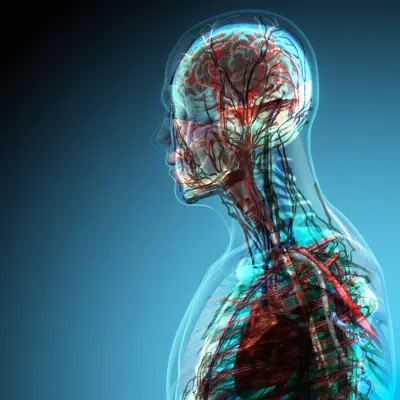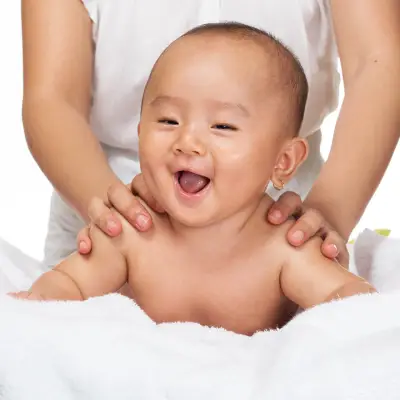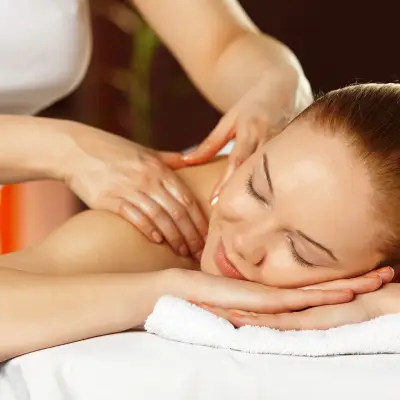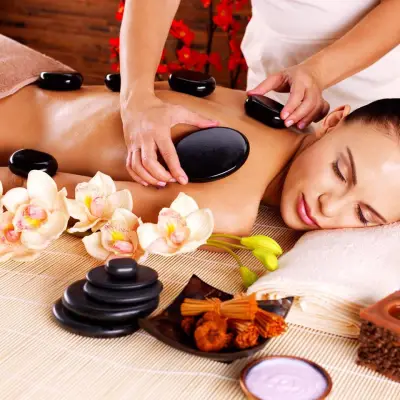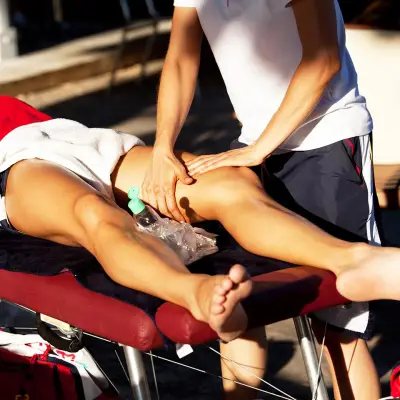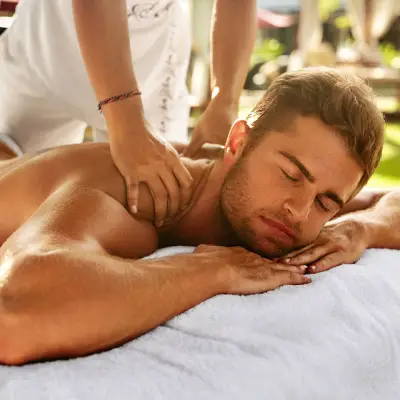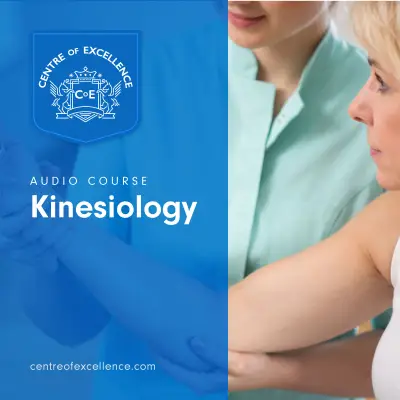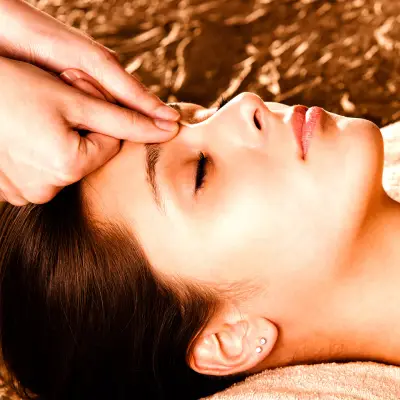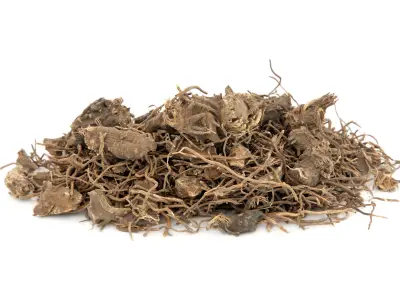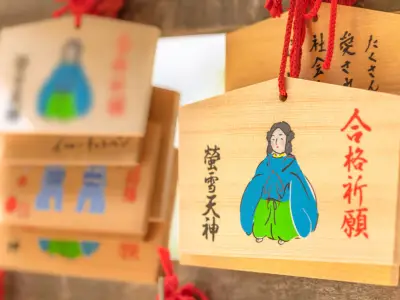In our previous article, we uncovered the lesser-known benefits of Indian head massage - an ancient practice that’s deeply rooted in Indian culture. This time, we’ll explore the history of this type of massage and the many therapeutic benefits that it offers for both mind and body.
Jump to:
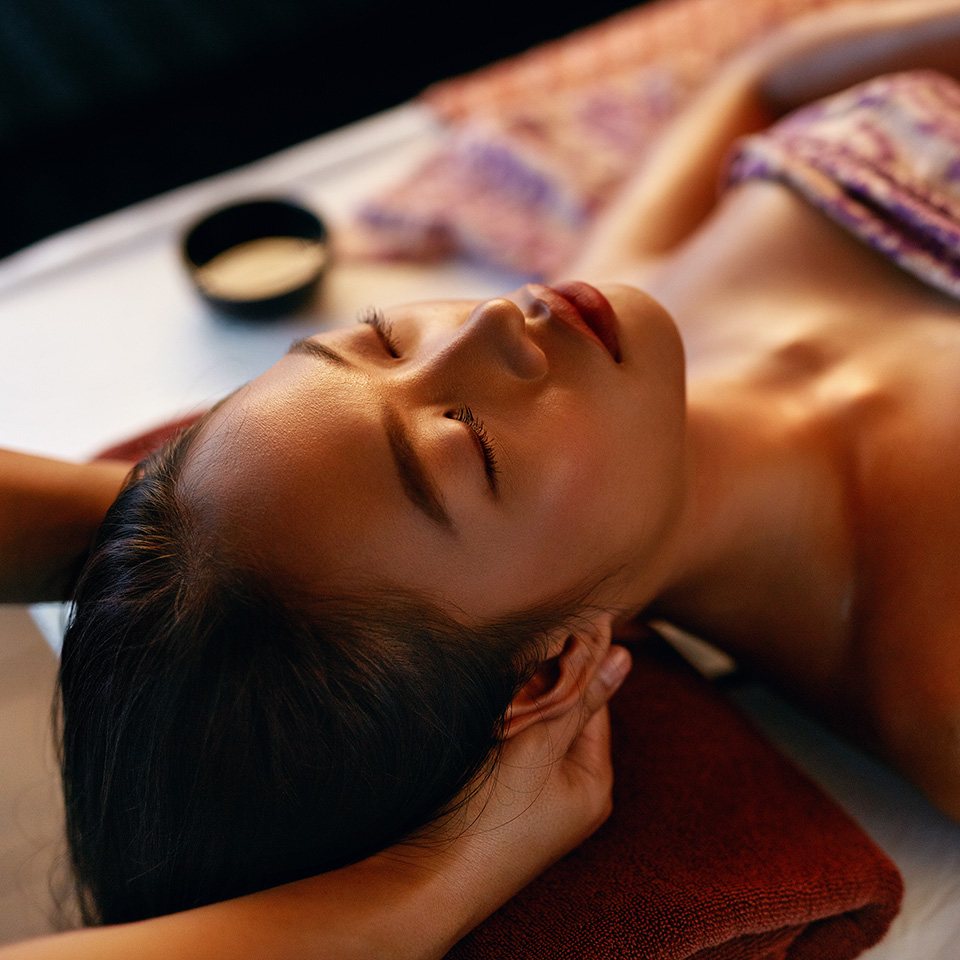
The Roots of Indian Head Massage
The foundations of Indian head massage can be traced back thousands of years to the venerable tradition of Ayurveda — a holistic system that emphasises balance and harmony between the body, mind, and spirit. In Ayurveda, the head is considered to be a vital energy centre, housing the crown chakra or "Sahasrara," which is believed to influence consciousness and spiritual connection.
Specific head, neck and shoulder massages were recorded as early as 1500 BCE. Practices like Champissage (a word derived from "champi," meaning "massage" in Hindi) developed, applying rhythmic pressure on the head to relieve tension. Oils were often incorporated for their therapeutic effects. Historically, Champissage was a grooming ritual that was employed by Indian families, promoting not only physical relaxation but also a sense of bonding and care among family members. It encompassed a variety of techniques that were aimed at stimulating circulation, relieving tension, and boosting hair health.
These ancient massage techniques became a respected part of India’s medical tradition, and their use spread through generations of barbers, families and healers to relieve daily stress and treat ailments. Blending ancient wisdom with modern understanding, modern Indian head massage is practised globally as part of integrative medicine and self-care regimens.
Recommended for you!
Best SellersHow to Do an Indian Head Massage
Indian head massage involves a combination of massage techniques that are applied across the upper back, head, neck and shoulders. It can be done with or without oils.
Kneading
Among these techniques, kneading takes centre stage. It involves rhythmic kneading of the muscles to release knots and tension. You want to apply a gentle (yet firm) pressure to the scalp, temples, and forehead, which encourages blood circulation, dispels tension and creates a soothing sensation.
Tapping
Tapping involves alternating fingertip tapping on the head, neck and upper back, often in briskly-repetitive tapping sequences. It stimulates the nerve endings and awakens dormant energies and, when combined with kneading, it provides a holistic release of built-up stress and leaves the recipient with an uplifting sense of renewed vitality.
Other oil-free techniques include:
- Friction: Small circular rubbing motions, often on scalp, temples or behind ears, to increase blood flow.
- Compression: Applying firm, compressive pressure with fingertips to specific points around the head to calm the nervous system.
- Stretching: Gentle stretches of the neck and upper back muscles to enhance range of motion.
- Stirring: Brisk circular “stirring” on areas like temples, forehead and the back of the neck to improve circulation.
Oil Infusion
A signature element of Indian head massage is the infusion of warm, nourishing oils. The massage therapist gently massages the oils into the scalp, hair, and sometimes the ears, enhancing the effects of the massage.
The choice of oil can be tailored to individual preferences and needs. For instance, sesame oil is often used for its grounding qualities, while coconut oil can add a beautiful shine to the hair. Essential oils often complement the carrier oils, with scents like lavender and chamomile promoting relaxation. The blend of techniques and oils means that Indian head massage is a luxurious, multisensory experience. The recipient emerges with lovely conditioned hair, a soothed scalp, relaxed muscles, and a calmed nervous system.
Benefits of Indian Head Massage
Indian head massage offers a multitude of physical and emotional benefits that make it a valuable healing practice.
Supported by credible studies, this practice enhances blood circulation, which revitalises cells throughout the body. Kneading and friction relax tense muscles in the head, neck and shoulders, providing tangible relief from tightness and pain. Research from the Journal of Alternative and Complementary Medicine has clearly demonstrated reductions in muscle tension and enhanced blood flow post-Indian head massage.
Mentally, the calming sensation of physical touch combined with soothing oils elicits profound relaxation. The slow tempo and meditative nature relieve hurried thoughts, allowing the mind to reach tranquillity and focus on the present. Experts find that regular head massages also help to significantly reduce anxiety, depression and fatigue.
Indian Head Massage vs. Other Therapies
Swedish Massage vs. Indian Head Massage
Indian Head Massage focuses solely on the upper body - the head, neck, shoulders and back. On the other hand, a Swedish massage encompasses a full-body approach, targeting muscles and promoting relaxation throughout. The techniques differ as well, as Indian Head Massage involves more tapping, stirring and compression versus Swedish long strokes.
Aromatherapy vs. Indian Head Massage
Aromatherapy centres on the effects of essential oils and enhances relaxation through scent. Indian head massage, while also employing oils, takes a more hands-on approach by incorporating specific techniques that directly address tension points. This tactile aspect adds a deeper layer of relief and release, making it an ideal option for individuals who are seeking both sensory indulgence and effective tension reduction.
Reflexology vs. Indian Head Massage
Reflexology stimulates prescribed pressure points, predominantly on the feet and hands. By manipulating these specific reflex points, it aims to induce relaxation and stimulate the body's natural healing mechanisms. In contrast, Indian head massage targets nerve points on the head and neck area instead.
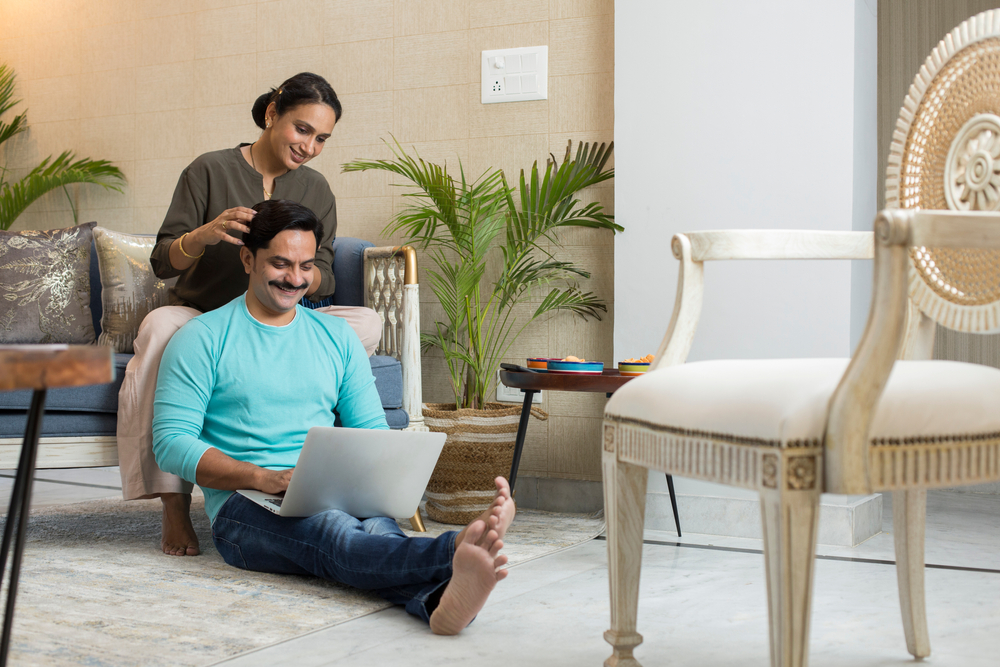
Incorporating Indian Head Massage into Your Routine
Integrating Indian head massage into your routine is a step toward holistic well-being. Whether you're drawn towards making it a daily ritual or a weekly escape, this practice offers a peaceful pause amid life's hustle.
Self Massage
Self-massage is a practical and accessible way to embrace Indian head massage. Begin by finding a quiet space where you can unwind. Close your eyes and take a few deep breaths to centre yourself. Gently warm a preferred oil, like coconut or almond and, with your fingertips, begin to knead your scalp in small circular motions. Gradually move to your temples and neck, applying gentle pressure. Explore tapping, stretching, and stirring techniques, adjusting to your comfort level. As you self-massage, let go of stress and tension, allowing the experience to envelop you in calm.
Seeking Qualified Practitioners
If you prefer a more guided experience, consider seeking out qualified practitioners. Before booking a session, inquire about the practitioner's expertise and experience in this field. A skilled practitioner can tailor the massage to your needs, enhancing its benefits.
Making it a Habit
Incorporating Indian head massage into your routine can become a cherished habit. It doesn’t matter if it's a brief morning ritual or a weekly wind-down: consistency is key. Set aside dedicated time, creating an oasis where you can savour the experience. As you weave Indian head massage into your routine, you're not just pampering yourself—you're nurturing a connection between body, mind, and tradition.
Indian head massage isn't just an addition to your routine; it's an investment in your well-being! Whether you embark on a journey of self-massage or entrust it to the hands of a practitioner, this practice can bring moments of calm and rejuvenation. If you’re interested in gaining a deeper understanding of this ancient massage practice, consider enrolling in our Indian Head Massage Diploma course for only £29 (save £98!).

